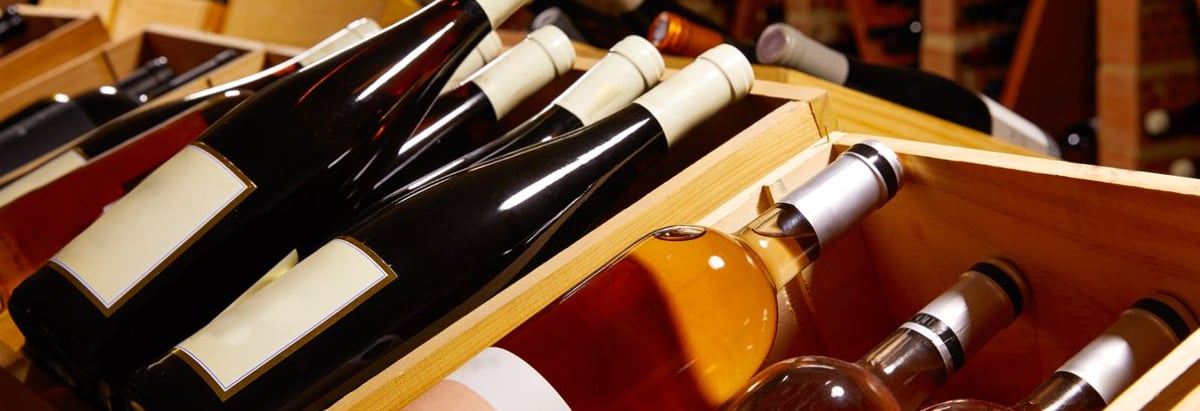Stock Analysis
Don't Race Out To Buy Treasury Wine Estates Limited (ASX:TWE) Just Because It's Going Ex-Dividend

Treasury Wine Estates Limited (ASX:TWE) stock is about to trade ex-dividend in 4 days. The ex-dividend date is one business day before a company's record date, which is the date on which the company determines which shareholders are entitled to receive a dividend. The ex-dividend date is an important date to be aware of as any purchase of the stock made on or after this date might mean a late settlement that doesn't show on the record date. Meaning, you will need to purchase Treasury Wine Estates' shares before the 28th of August to receive the dividend, which will be paid on the 1st of October.
The company's next dividend payment will be AU$0.19 per share, and in the last 12 months, the company paid a total of AU$0.36 per share. Based on the last year's worth of payments, Treasury Wine Estates stock has a trailing yield of around 3.0% on the current share price of AU$11.81. Dividends are a major contributor to investment returns for long term holders, but only if the dividend continues to be paid. So we need to check whether the dividend payments are covered, and if earnings are growing.
See our latest analysis for Treasury Wine Estates
Dividends are usually paid out of company profits, so if a company pays out more than it earned then its dividend is usually at greater risk of being cut. An unusually high payout ratio of 284% of its profit suggests something is happening other than the usual distribution of profits to shareholders. Yet cash flow is typically more important than profit for assessing dividend sustainability, so we should always check if the company generated enough cash to afford its dividend. It paid out 108% of its free cash flow in the form of dividends last year, which is outside the comfort zone for most businesses. Cash flows are usually much more volatile than earnings, so this could be a temporary effect - but we'd generally want to look more closely here.
Cash is slightly more important than profit from a dividend perspective, but given Treasury Wine Estates's payments were not well covered by either earnings or cash flow, we are concerned about the sustainability of this dividend.
Click here to see the company's payout ratio, plus analyst estimates of its future dividends.
Have Earnings And Dividends Been Growing?
Businesses with shrinking earnings are tricky from a dividend perspective. If business enters a downturn and the dividend is cut, the company could see its value fall precipitously. Readers will understand then, why we're concerned to see Treasury Wine Estates's earnings per share have dropped 27% a year over the past five years. When earnings per share fall, the maximum amount of dividends that can be paid also falls.
We'd also point out that Treasury Wine Estates issued a meaningful number of new shares in the past year. It's hard to grow dividends per share when a company keeps creating new shares.
The main way most investors will assess a company's dividend prospects is by checking the historical rate of dividend growth. In the last 10 years, Treasury Wine Estates has lifted its dividend by approximately 11% a year on average. The only way to pay higher dividends when earnings are shrinking is either to pay out a larger percentage of profits, spend cash from the balance sheet, or borrow the money. Treasury Wine Estates is already paying out a high percentage of its income, so without earnings growth, we're doubtful of whether this dividend will grow much in the future.
Final Takeaway
Has Treasury Wine Estates got what it takes to maintain its dividend payments? It's looking like an unattractive opportunity, with its earnings per share declining, while, paying out an uncomfortably high percentage of both its profits (284%) and cash flow as dividends. This is a starkly negative combination that often suggests a dividend cut could be in the company's near future. It's not an attractive combination from a dividend perspective, and we're inclined to pass on this one for the time being.
So if you're still interested in Treasury Wine Estates despite it's poor dividend qualities, you should be well informed on some of the risks facing this stock. We've identified 3 warning signs with Treasury Wine Estates (at least 1 which is a bit unpleasant), and understanding these should be part of your investment process.
If you're in the market for strong dividend payers, we recommend checking our selection of top dividend stocks.
Valuation is complex, but we're here to simplify it.
Discover if Treasury Wine Estates might be undervalued or overvalued with our detailed analysis, featuring fair value estimates, potential risks, dividends, insider trades, and its financial condition.
Access Free AnalysisHave feedback on this article? Concerned about the content? Get in touch with us directly. Alternatively, email editorial-team (at) simplywallst.com.
This article by Simply Wall St is general in nature. We provide commentary based on historical data and analyst forecasts only using an unbiased methodology and our articles are not intended to be financial advice. It does not constitute a recommendation to buy or sell any stock, and does not take account of your objectives, or your financial situation. We aim to bring you long-term focused analysis driven by fundamental data. Note that our analysis may not factor in the latest price-sensitive company announcements or qualitative material. Simply Wall St has no position in any stocks mentioned.
About ASX:TWE
Treasury Wine Estates
Operates as a wine company primarily in Australia, the United States, the United Kingdom, and internationally.

